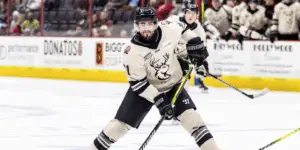
After making it to the second round of the playoffs in the 2021-22 season, the Rapid City Rush had high hopes for the 2022-23 season. Head Coach Scott Burt had something to build off of coming into the 2022-23 season, unlike the 2021-22 season when he started with nothing.
The Rush ended the 2022-23 season with a record of 33-34-5-0 for a win percentage of 0.493 and 71 points. This record is less than ideal when it seemed like the team had all the right puzzle pieces coming into the season.

Where the Season Went Wrong
It is no secret that the season was a rough one from the start. The Rush started the season with goaltender Brad Arvanitis, forward Garrett Klotz, and forward Brett Gravelle, all on injured reserve. Klotz was a significant loss, as he was a presence on the ice and stopped other teams from pushing around the Rush too much. Gravelle was also a huge loss as he was the leading goal, scorer, had the second most points on the team (behind Logan Nelson) and had the best +/- amongst the forwards (third best on the team) for the Rush in the 2021-22 season.
Then at the beginning of November, the Rush lost defenseman Rhett Rhinehart to injured reserve. At this time, the defense was already hurting, which only caused insult to injury. Less than two weeks after Rhinehart was put on injured reserve, another defenseman, Quinn Wichers, was placed on injured reserve, and a week after that, Colton Leiter, who was a forward but was mainly playing as a defenseman, was put on injured reserve. At this time, the Rush did get defenseman Carter Robertson in a trade with the Norfolk Admirals, but in that trade, they lost defenseman, Callum Fryer.
But the season really took a turn for the worse around Christmas time. Around this time, sickness swept through and hit some players. Then Simon Lavigne was called up to the Calgary Wranglers, and defenseman Kenton Helgesen and forward Jon Martin were put on injured reserve. On top of that, a couple of defensemen who were called up previously were sent back to the Rush but, due to some problems with transportation, did not allow them to physically make it to where the team was playing. Around this time, two defensemen also decided to leave the team and return to school, hurting the team even more than it already was. After this point, the team spent most of the remainder of the season shorthanded, trying to finish the puzzle with missing pieces.
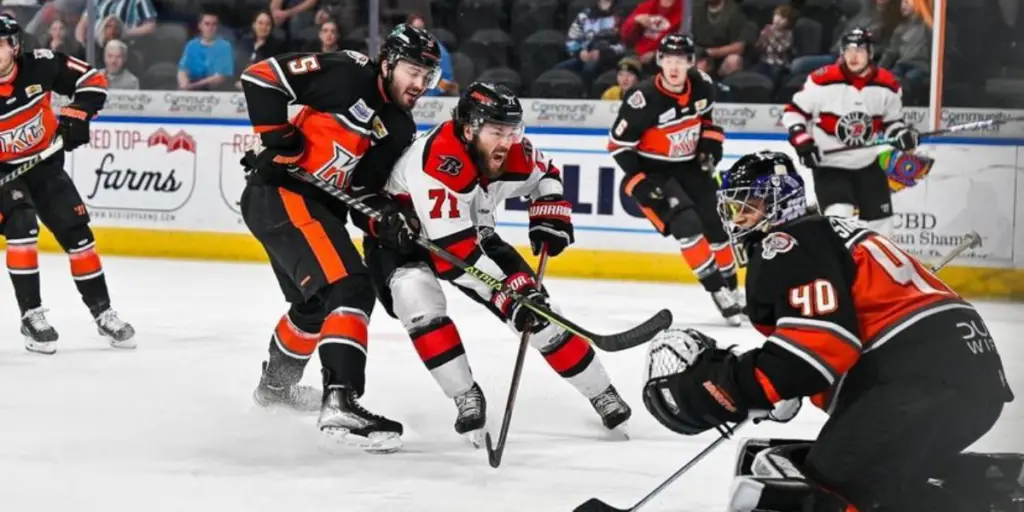
Highs and Lows
While it can be hard to find highs in a season as frustrating as this season was in Rapid City, there were some highs. At times the Rush were fitting the puzzle pieces together, such as the 9-1 win against the Tulsa Oilers, the 8-2 win against the Allen Americans, or the six-game win streak in December.
There were quite a few lows in this season, including the seven-game losing streak immediately after the six-game win streak, being swept eight times, being shutout four times, ending the season with a win percentage under .500, and not getting a single shutout all season.
While these may all be pretty bad lows, these are all things that Coach Burt and the team can use to build and learn from for next season.
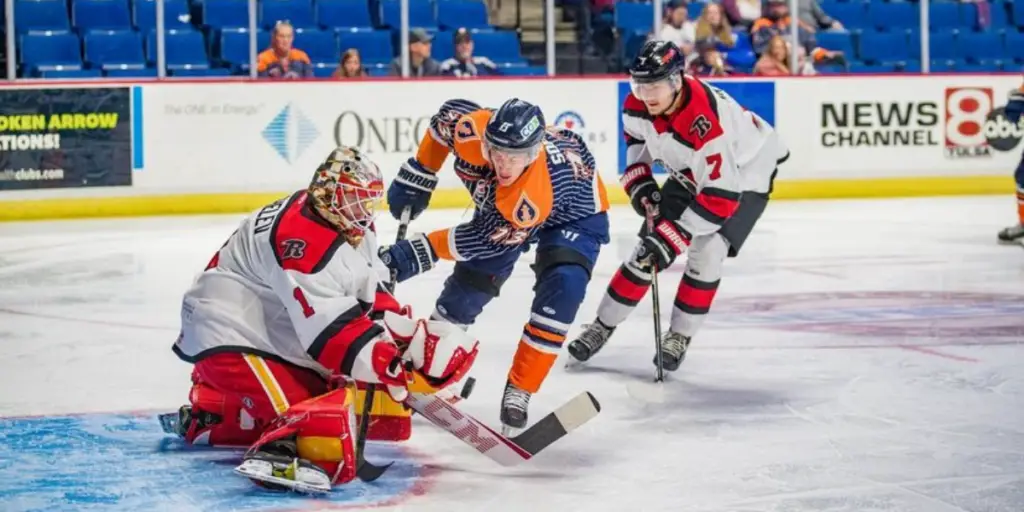
Breakdowns
One of the main breakdowns the Rush struggled with this season was when they were in the offensive zone; this usually led to a breakaway going the other way for the opposing team. But the offense was not the only group that struggled with breakdowns; there were also a lot of defensive breakdowns. Many of these breakdowns and turnovers happened in front of the goalie or when there was no one in a Rush jersey in front of the goalie to help out. The breakdowns with the goalies usually happened at the same time. Both Rush goaltenders, Adam Carlson and Daniil Chechelev, would be on point simultaneously, but there were many times when they were off their game. When the goalie and defense are off, that leaves a tiny margin of error for the offense and makes it to where they must score a lot to win. But at the same time, when the offense runs dry, it makes the defense and goalies’ job much harder as it gives them a tiny margin of error. When the team is only putting up one to two goals a game, the goalie can only let the other team score at most one goal, which is highly challenging when the other team is being allowed a ton of shots.
Another struggle this season was special teams. They did not seem to click at all this season. Rapid City’s powerplay (16.3%) finished 23rd in the league overall, with both the home (17.0%) and away (15.6%) powerplay also at 23rd. The penalty kill (76.3%) finished tied for 26th in the league with the Iowa Heartlanders. The home penalty kill (77.0%) finished 27th, and the away penalty kill (75.7%) finished 20th in the league. Special teams hurt the team a lot this season. Specifically, penalty kills.
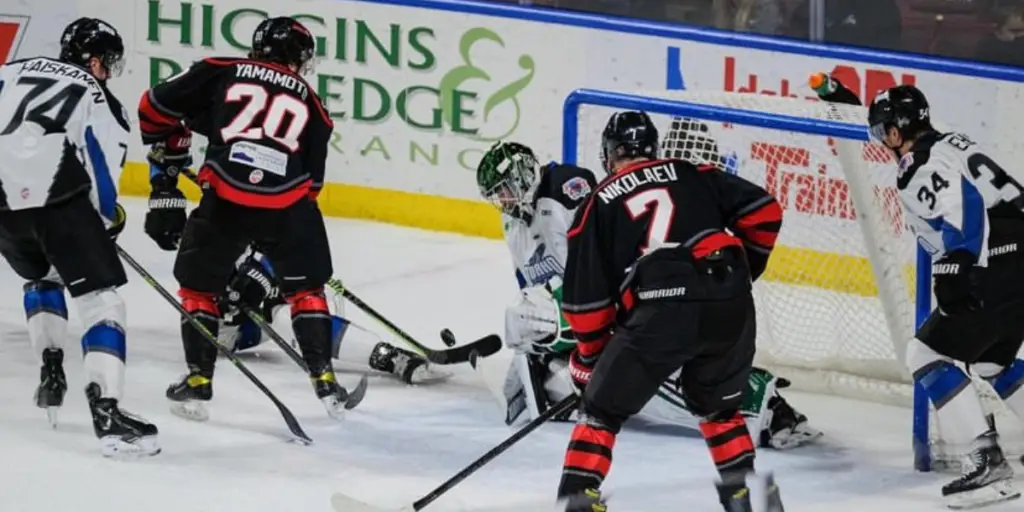
AHL Players
Most of the AHLers spent much of the year dealing with injuries and missing games, causing the team to be shorthanded. Then there were also the two AHL contracted players that left in December to return to school, which didn’t help the team. A couple of the AHL players who didn’t deal with injuries didn’t contribute much and made quite a few errors when they were on the ice.
A few positives of the AHL came from Jon Martin, Matt Marcinew, Ilya Nikolaev, and Calder Brooks. Jon Martin spent most of the season on injured reserve with an upper-body injury, But when Martin came back from injured reserve, there was a glimmer of hope in the team. Martin’s AHL experience and strive to win seemed to help bring the team together when he came back, but his comeback came a little too late. Matt Marcinew ended the season leading the team in goals (30), assists (38), and points (68). Marcinew almost always came to play and wanted to win, which would explain his point-per-game average. Ilya Nikolaev and Calder Brooks seemed to have slow and rough starts to the season. But as the season progressed, both started to find their groove, which showed in both of them earning call-ups. Nikolaev seemed to improve throughout the season, but his season ended early due to injury.
The other AHL players consisted of Rory Kerins, Simon Lavigne, Rhett Rhinehart, Daniil Chechelev, and Lucas Feuk. Kerins also had a rough start to the season but seemed to learn and develop quite a bit during the season. Having just turned 21, Kerins had an average season as he spent time with both the Calgary Wranglers and Rapid City Rush. Lavigne and Rhinehart left the team, but when they were here, they were two guys who the team depended on defensively, so losing them simultaneously was a pretty significant loss for the team. Chechelev had an excellent start to the season but then declined towards the end. When he was on, he was on, but when he was off, he was off, which hurt the team sometimes. Like Kerins, Chechelev is also young, so hopefully, that wrinkle in his game will start to iron out as he gets older and plays more. Feuk also had a pretty decent season. As a forward, he did not produce much offensively, as he only had 12 points (three goals and nine assists) in 45 games. Feuk had the looks; he just had no luck getting the puck to cross the line. He is still early in his career, though, so he could start getting some luck with scoring goals in upcoming seasons.
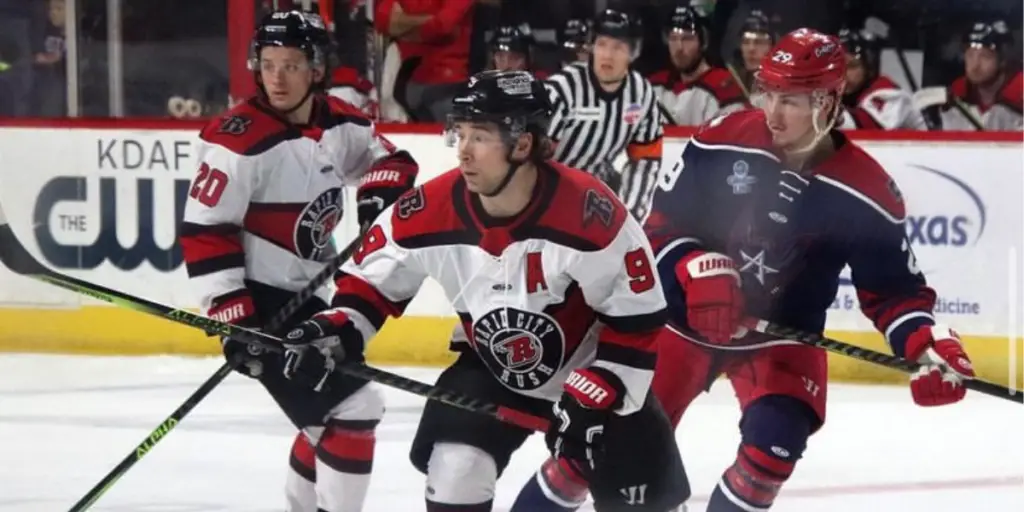
Ironmen
This season, the Rush had two Ironmen who played in all 72 games. Those two players were Max Coatta and Alex Aleardi. Through the 72 games played, Coatta had 17 goals and 24 assists for 41 points. Aleardi had 30 goals and 35 assists for 65 points through the 72 games. Aleardi was also named Ironman of the Year by the Rush at the end of the season.
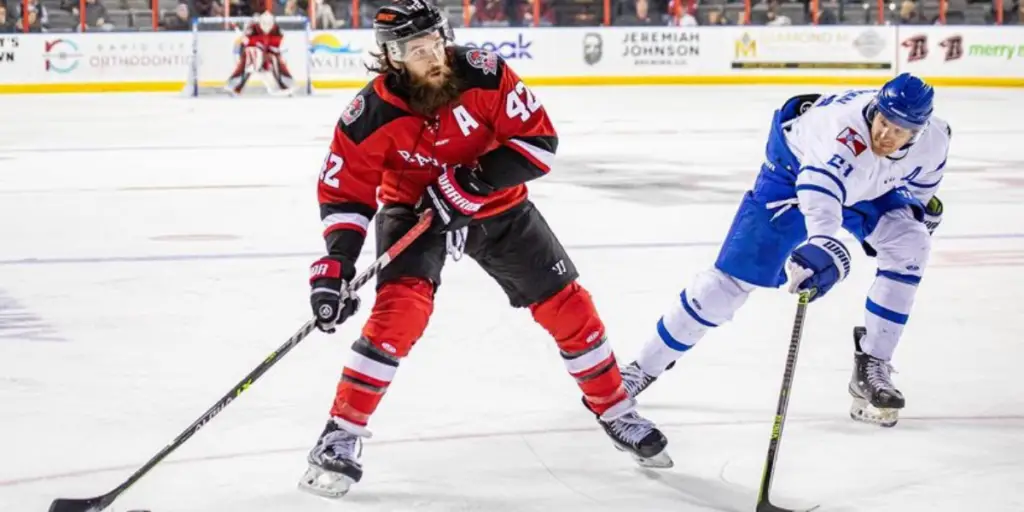
Alex Aleardi’s First Season with the Rush
Aleardi was a player that the Rush picked up over the off-season. The Allen Americans had acquired Aleardi after he won the Kelly Cup with the Florida Everblades. Shortly after that, the Rush traded Stephen Baylis for Aleardi. This is a trade that the Rush won by a landslide, as Stephen Baylis did not play in a single game due to injury, but that is not the only reason the Rush won the trade. This season, Aleardi set single-season career highs in both assists and points and was one goal away from tying his single-season high in goals. Aleardi brought a certain level of skill that the Rush was missing. Aleardi was able to find the small openings and get the puck through. On top of that, he has a ton of speed which allowed him to prevent quite a few icings and allowed him to get a few breakaways. Aleardi also brings a certain level of competitiveness that is only in players who have won all the way before. With his competitive level and being a veteran, he can also help many younger guys develop their skills, which also helps improve the team as a whole. There are very few players out there like Aleardi, so hopefully, he will be
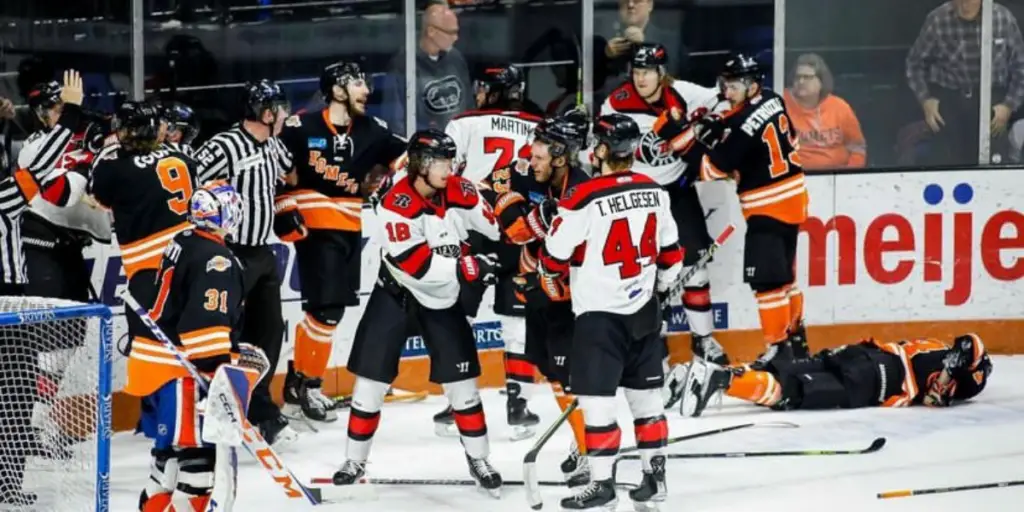
Hopeful Returns
While having the entire team return next season would be amazing, that is not possible. So, here are the players I would like to see back in a Rush jersey next season.
The player I would like to see back the most is Alex Aleardi. As mentioned, he brings a different level of determination to the team. He also continually strives to win and carries a level of energy that makes games fun to watch.
The next player I would like to see back is Carter Robertson. Robertson was acquired in a trade with the Norfolk Admirals, which saw two Rush players, Callum Fryer and Tanner Schachle, go to Norfolk. I was initially skeptical about the trade as the team was losing two players for one, but now I would say the trade was worth it. Robertson was one of the only defensemen on the Rush that would lead the charge into the offensive zone while still being able to get back if the opposing team got the puck. Robertson can also read the puck well and was one of the few players willing to sacrifice their body to stop a shot. He is also willing to lay hits and stand up for teammates when needed. On the offensive side of things, Robertson has a wicked slapshot that goes in almost every time, which helps the team when the forwards are in a scoring drought.
Tyson Helgesen is the next player I would like to see back. The younger Helgesen brought the grittiness the team needed and was not afraid to hit or stand up for his teammates. Helgesen was also really good as a defenseman, as he got back pretty quickly to prevent a breakaway from happening for the other team. Tyson and Kenton Helgesen are pretty much a package deal now, so I think if Tyson comes back next season, Kenton will most likely come back as well.
Jon Martin is another player I would like to see back. He is a powerful forward and can score goals from many places. When Martin returned from his injury, there was a noticeable momentum change in the team that changed how they played. Martin seemed to be the on-ice captain at the end of the season, with Kenton Helgesen out injured. The players seem to all respect him and value his input. The only reason Martin is not higher on my list is because he was assigned to us by the Wranglers, so if another AHL player shows interest in him, he will probably sign with them. But if not, I see him re-signing with the Rush.
The final players I want to see back are a two-for-one in Blake Bennett and Charles Martin. Both joined the Rush later in the season after finishing their collegiate seasons. Both players brought a lot of speed, and Martin was a good addition to a struggling defense. I see both of these players as guys that could help the team in seasons.
The honorable mentions will go to Jimmy Soper and Weiland Parrish, as they both were standout players after being acquired by the Rush. I do not see Quinn Wichers returning; I see him getting an AHL contract. I also do not see Daniil Chechelev returning unless Calgary resigns him.
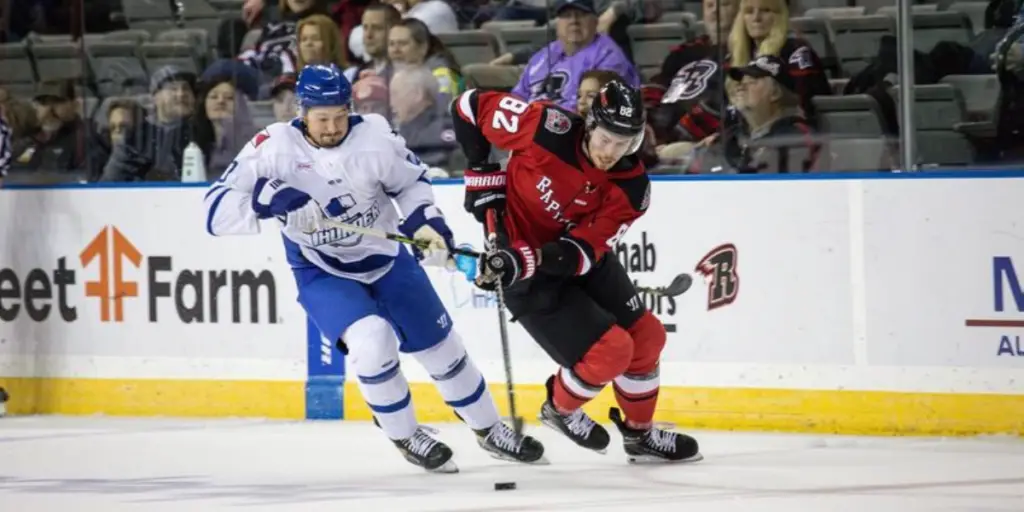
What’s Next?
There is a lot to learn and grow upon after a season like the 2022-23 season. One of the main things is finding defensemen to avoid what happened this past season. Another thing to grow upon is special teams. They cannot get much worse with how bad the special teams were this season. Next season should show that the team learned from the failure in special teams this season. Focusing on special teams is almost necessary for next season, but at the same time, the team needs to ensure that 5-on-5 play does not suffer from trying to improve special teams. A healthy balance between 5-on-5 and special team practice could set the team up for success. Hopefully, Coach Burt will bring back a good core group of guys, and the new players brought in will help strengthen the core group.
Discover more from Inside The Rink
Subscribe to get the latest posts sent to your email.

